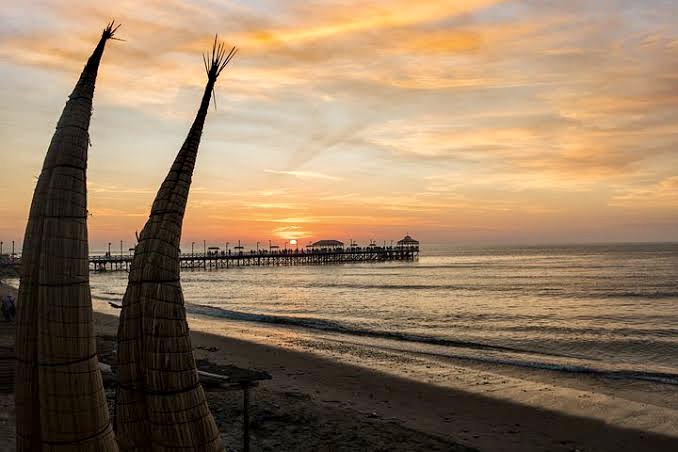Huanchaco is a colorful, small beach town on the northern Pacific coast of Peru. This town of around 70,000 people is famous for surfing, sunsets, ceviche, (a raw-fish salad specialty), and a beautiful coastal environment. Plus, in the surrounding area are fabulous archeological sites of pre-Incan civilizations, such as the Moche.
Posted December, 2022. This article is based on a lost letter addressed to a friend, Fred who lives in Austin, Texas – a letter I recently found. Back In September 2019, I had just moved to Huanchaco, Peru. I wrote to Fred about my excitement of moving to Huanchaco, but never mailed the letter. I wrote the first part of this message in fall of 2019. I put the letter away, but updated it many months later. I still never mailed it. The letter was stuffed in some pillow case of darning tatters that I dragged along in my travels across the Lower Azores of the world. You see, Peru was just one stitch in time for me.
Background: Starting on July 1, 2019, and not ending yet, my travels weave a tapestry across the globe. Beginning from my town of Home Slice, California, I threaded the needle from Home Slice to Russia and then spread out. I quilted my way across the globe to Peru in September 2019, where I hemmed up this forgotten letter. The following year, I embroidered myself out of Peru and cross-stitched over to Egypt. About a year later, I crocheted my way from Egypt to here, Bali, where I live. My yarn is over as I am now a permanent resident of Indonesia. I live on the fringe of the world, but such is the fabric of my life. I am so sorry to make you read this paragraph. What a stupid extended metaphor, but the skanky, addled writer in me could not resist. I hope to make it up to you with the rest of this article.
My one year in Peru including the first six months of the covid lock down, from March through August 2020. The Fred letter does not focus on the nightmare of covid, but it is woven into the story. Sorry about the “woven” comment. As mentioned, I recently found this letter in my odd sock drawer, and want to share it here. I lightly edited the original letter. Then, I added the story headings up front, and bonus photos at the back end. Otherwise, this is what I wrote at the time covid hit Peru as I was living there in Huanchaco. It is a time capsule of recent history in a place far away from my town of origin, Home Slice, California.
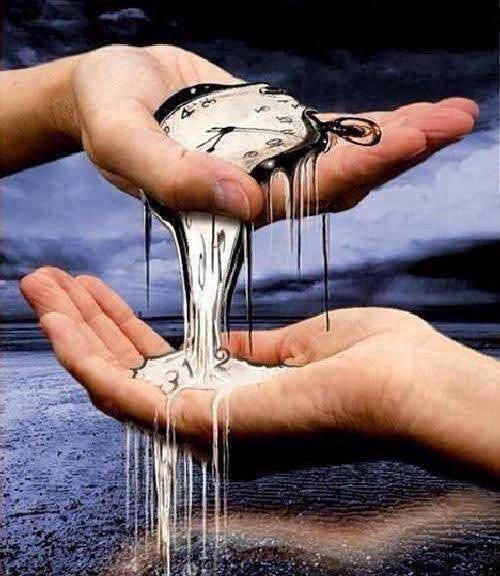
As mentioned, after snacking on a huge chunk of the global sandwich, I moved to Peru in September, 2019. I wandered around Peru for awhile looking for a place to permanently alight and stake out a new home claim. First, I landed and looked around the Amazonian border town of Iquitos, which was way out in the Peruvian woods. This letter story-line picks up after I left Iquitos and moved to to Huanchaco, a small Pacific surf town outside of the regional hub, Trujillo. In recent years I have written elsewhere in this website about Iquitos:
Bizarre Quitos, Peru Collides With The “Ah Wilderness” Experience of the Amazon
Note: Before Landing in Huanchaco, I Traveled Around Amazonian Iquitos and then the Sacred Valley
Dear Fred — I am living large here in Peru. I spent a month in the Amazon border town of Iquitos. Life is great on the Amazon River and just being in, or near, the jungle. In contrast, the nearby town of Iquitos was very different. Iquitos had a lot going for it, but it had some big down sides, too.
For the last three weeks. after leaving Iquitos, I have been travelin’ by stage coach (humor me), putting up horses in every town, hoping to alight on a new home. Finally, I pulled into a plum of a Peruvian pueblo: Huanchaco, smack dab on the Pacific Ocean. Huanchaco is a little suburb or separate community, right outside of the main town of Trujillo, in northern Peru. I stopped here in Huanchaco, looked around,; but then moved on to the next town. When I first arrived, I was like: “Whoa! Hold the horses. Let’s jump out off this here stage coach and stake a claim.” Yet, I left Huanchaco and kept on touring Peru. Why? I already paid for an air flight and hotel to visit the Sacred Valley in the southern part of Peru. Thus, with fresh horses, I jumped back into the Wells Fargo buckboard, and rode out of Huanchaco Town. I figgered that I would return to Huanchaco, unless I had some life-changing, religious experience kept me in the Sacred Valley. In sum, I looked around Huanchaco, said “Dang! Who wodda thunk?”, but dutifully returned to Cusco as had a pre-paid plane ticket in my hot little hands. I went just to check out Cusco and the Sacred Valley before settling on a new place to live.
As to the Sacred Valley, I went and saw, but was not conquered. I was not struck by religious lightning in the Sacred Valley. I did have a lovely tour though several mountain towns, though. The Sacred Valley runs right into Macchu Piccu, arguably the most famous, and most spectacular, ancient site in the world. The valley is anchored at the other end by the regional capital city, Cusco, seen below at bottom:
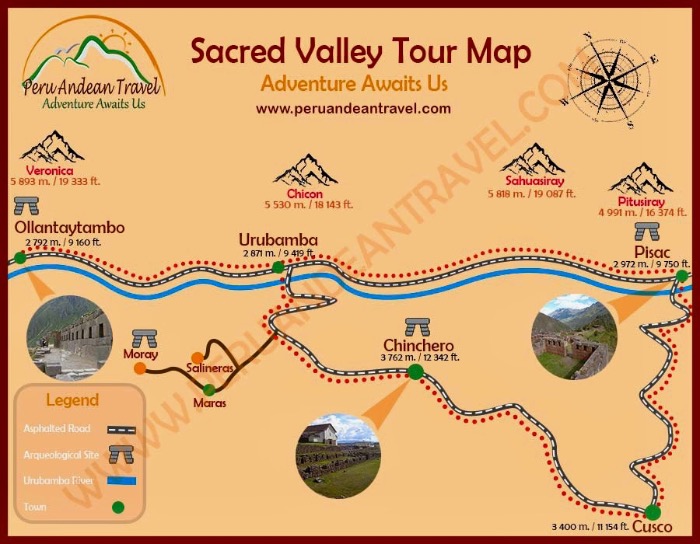
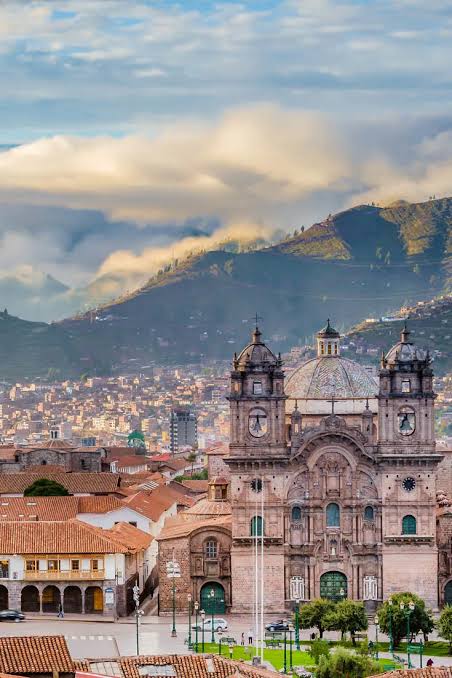
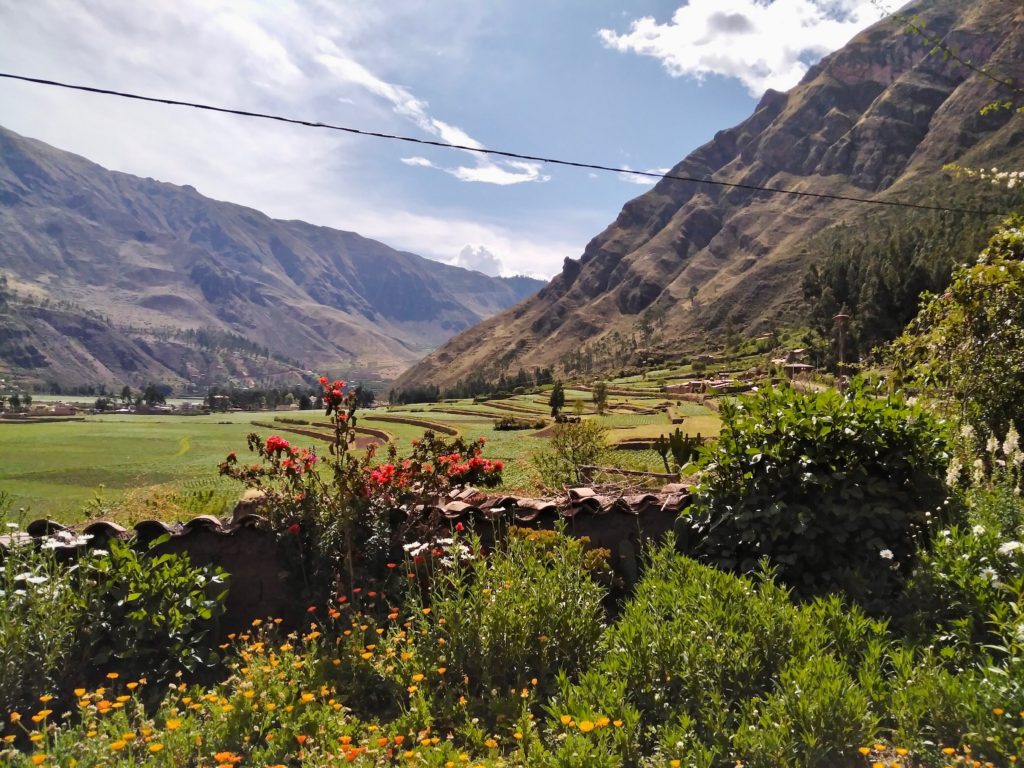
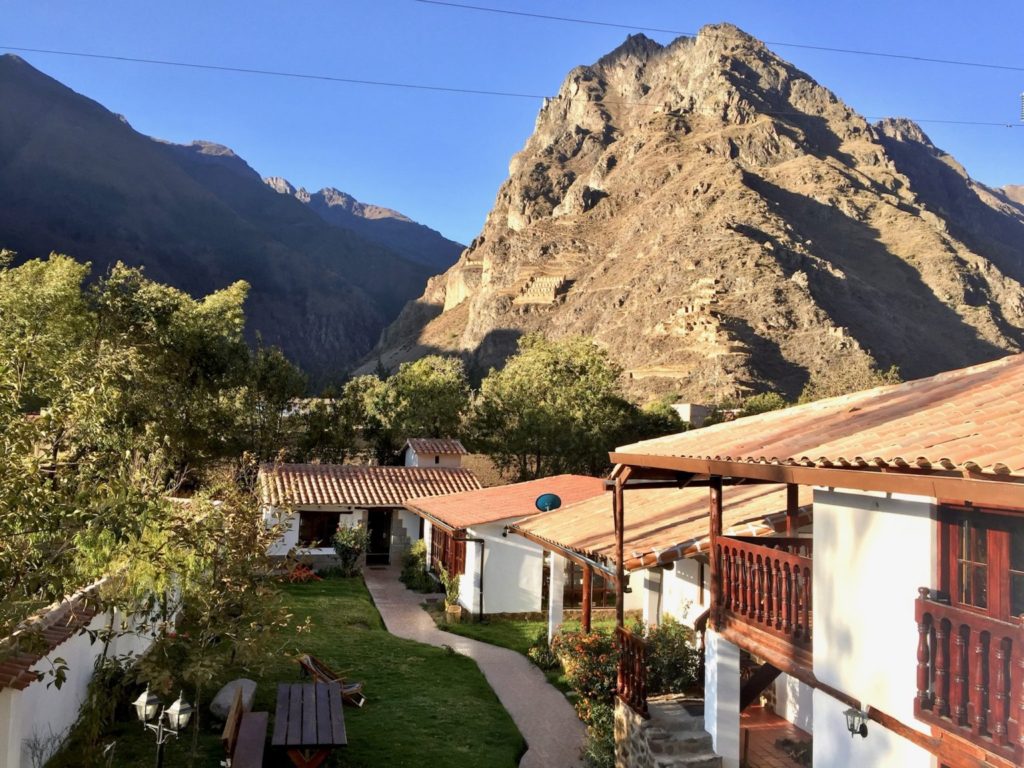
Thank the Incans (and Quechans) for Sharing their Sacred Valley
Then I landed in Beautiful Huanchaco
The Sacred Valley was beautiful, but I did not want to live there. I want to live on the beach in Huanchaco. After that sacred tour was finished, I headed straight back to my first choice: the laid-back, beach town of Huanchaco. This town is surf city. Huanchaco is on the international surf competition circuit — not for HUGE waves; but for many, many smaller waves that go on for a long time. There could be five or six waves breaking at once and the waves can each be up to half a mile long. Also, the nearby beachy town of Chicama has the longest left handed waves in the world (up to one mile in length). I do not know what “left handed wave” means. I guess that makes the surf around here a special challenge. Huanchaco is one of five beaches world-wide that are part of the World Surf Reserve. Again, I have no idea.
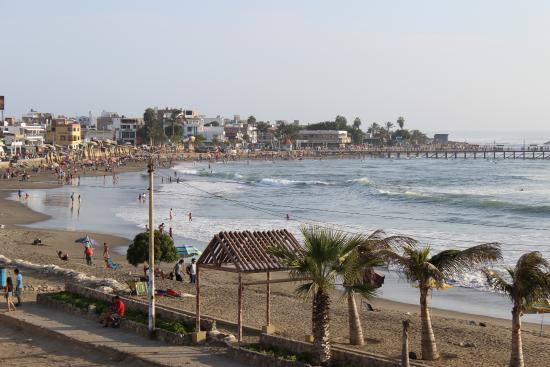
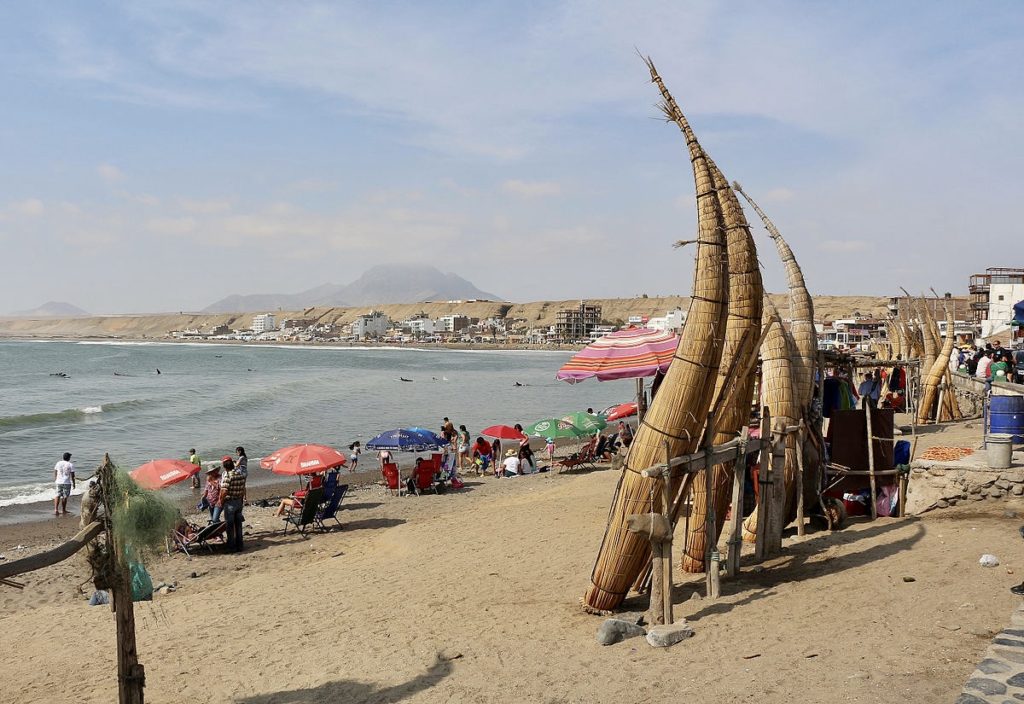
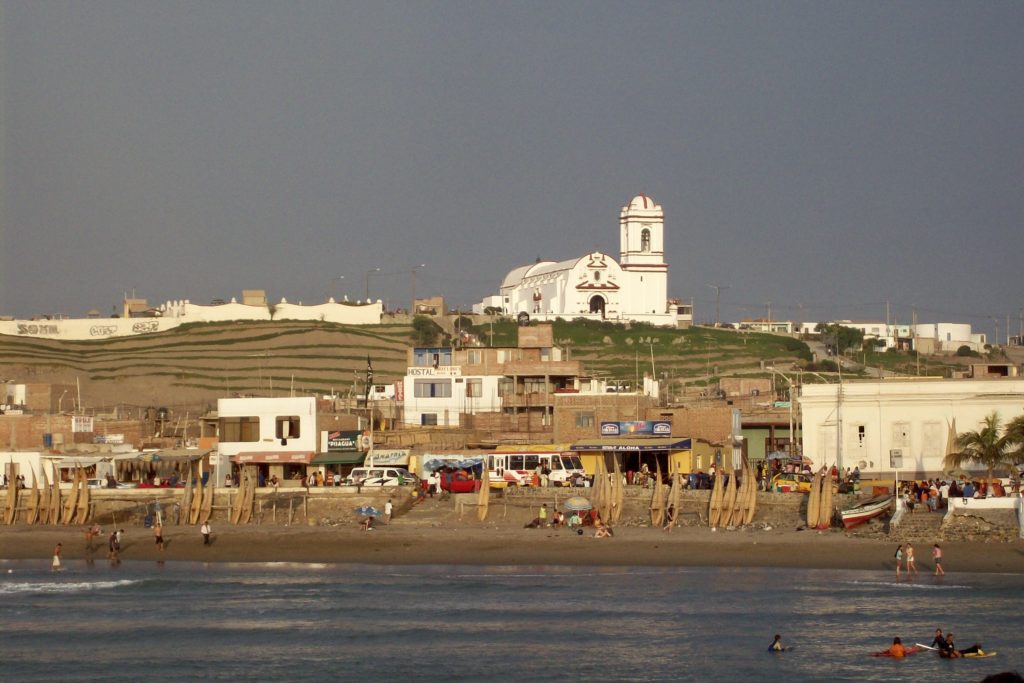
My Neighbors Make Tortora Canoes
Huanchaco is famous for totora reed canoes, the design of which has been unchanged for God knows how long. The reeds grown in the nearby swamp reserves so there is plenty of building material. These reed watercraft have been used in Peru perhaps for the past 3000 years or so, as evidenced from ancient pottery shards. The local fishermen use them to transport and place their fishing nets at sea. Later, the fisherman collect the nets (and fish) and store the catch in the canoe’s inner cavity. Meanwhile, the fisherman may spend the time fishing with regular poles while waiting to collect up fish from the nets. At the end of the day, the locals then use the boats to ride the waves back into shore, which pretty much looks likes surfing. In fact, the tortora boaters will ride the waves alongside surfers during competitions, I think just for kicks.
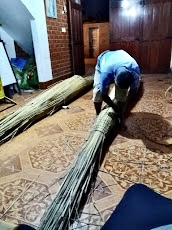
The first two pictures on left and right show my neighbor building totora boats in the front lobby of his little homestay. I walked by his place late one night and the front door was open. I popped in to say hello: Color me surprised. The photo below left is a local who built totora boats as part of a demonstration in the town plaza.
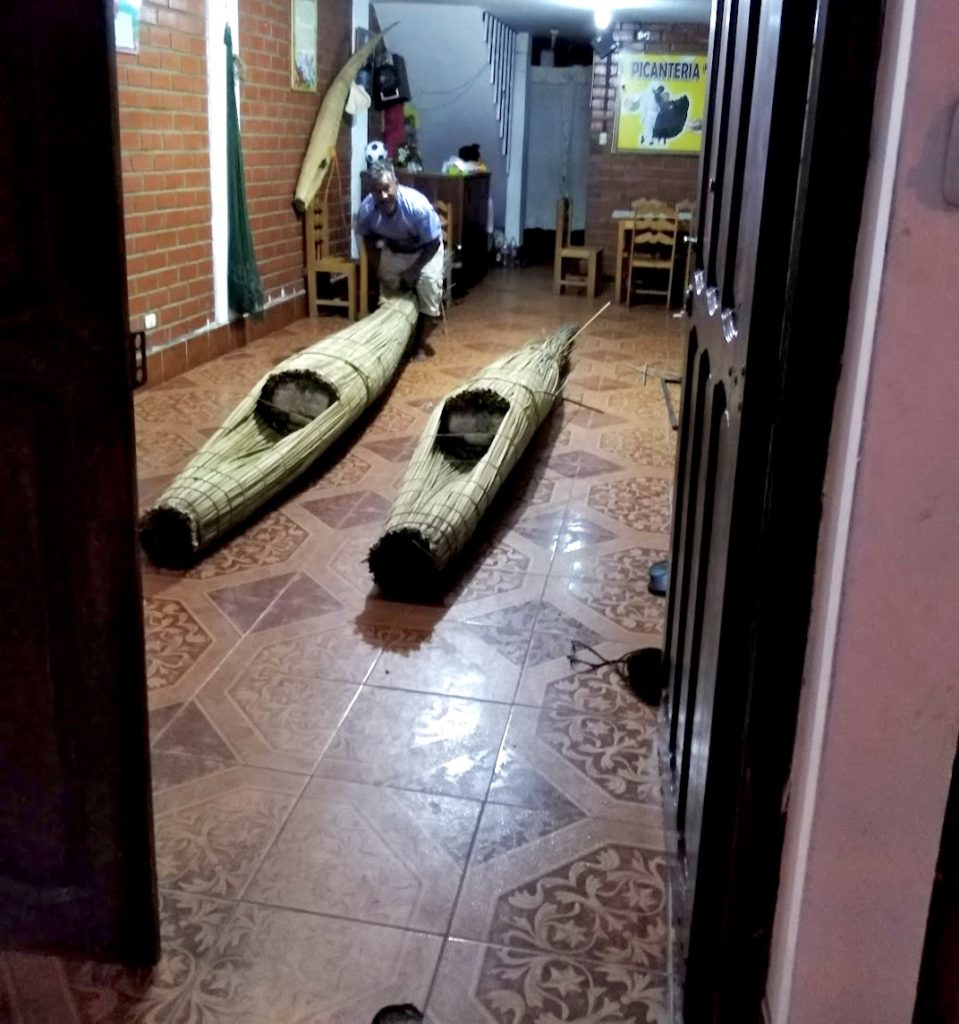
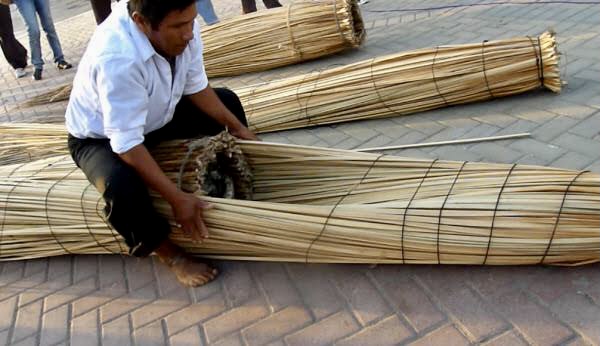
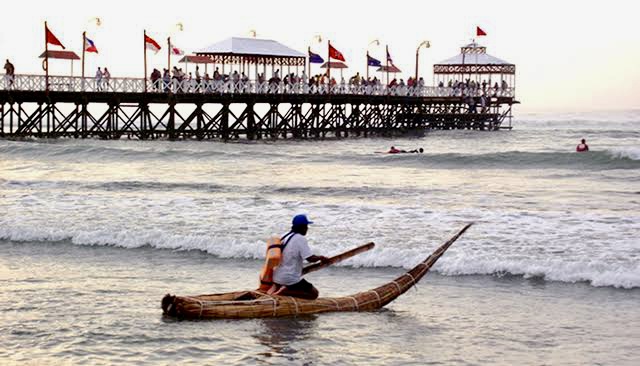

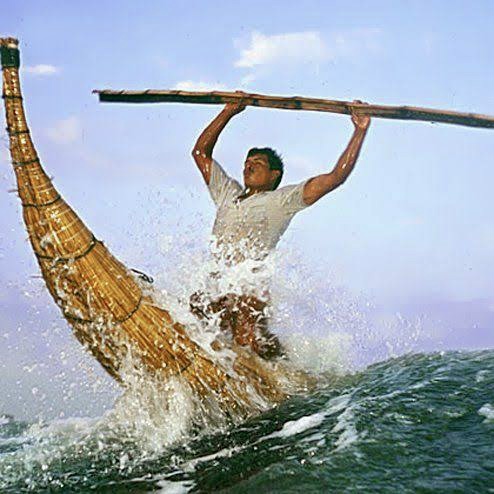
Huanchaco is a Great Place to Live
To be clear: Some parts of Huanchaco are, more or less, the quality of low-rent San Diego, but still nice. There are also other parts, a few small sections, that are squeaky urban clean: sidewalks well-maintained with urban garden strips on the side; buildings brightly painted; well-taken care of little parks, street signs, and so on. Other large sections of town sorta got a medium amounts of normal Third World wear and tear. And small sections are kinda run-down, but not really awful. This is a good balance. Outside (tourist) money could flood into town to spruce this place up like a trendy, well financed, California beach-town. Then, we would have California rents or close to it; and would needs tons of junky tourist shops and tons of junky tourists to match, all in order to pay for it. Sleepy Huanchaco is better and more auténtico. [Ed. note: authentic in Spanish ZVC]
We also have a good balance of gringos and locals. Surfing is the real magnets that draws foreigners. Huanchaco does have a fair amount of tourist (and local) surfers, but also beach lovers, hippie hangers-on, retired oldsters, young adventurers, or whatever. All the gringos that blow into town, just add a bit of foreign seasoning to the local flavor. And everyone enjoys the local food. The main rave, the national dish, ceviche, is famous here in Huanchaco as the best Peru has to offer. Ceviche is some sort of raw sushi-like salad. with many other options that can be added to the mix. Try this version from the local fancy restaurant, Big Ben. This ceviche has a little hair on it:
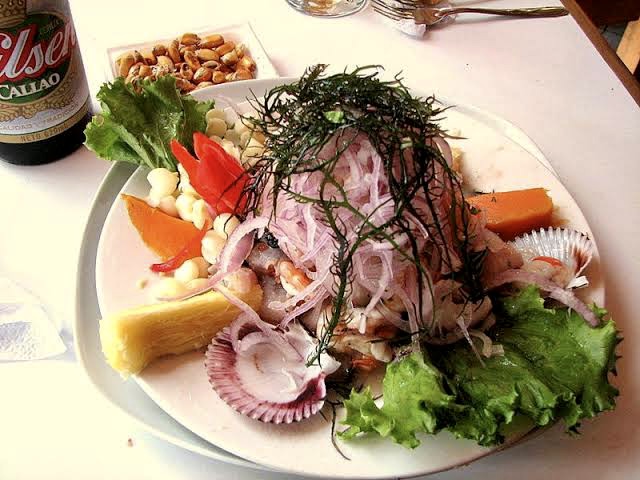
But I Went Stir Crazy
Life has gone into slow drip mode, like an ancient Chinese water torture, during this severe lockdown. Life is so tight here that if I am out and about, I do not cross he street to greet a passing friend. I yell across the street: “¿Cómo estás?” I hear the yelled response and we both move on. Thus, I live very alone. I actually look forward to going to bed, alone. Before I go to sleep, I try to direct my dreams to include friends, family, people I hated — anybody! That way, I get the chance to sit and have a conversation with someone.
Peru has one of the most severe lock downs in the world. The police and army patrol the streets and beaches. We have a new, lock down scheme that started a few weeks ago. People can still leave home for brief, essential trips only, but have to follow this crazy gender system. Men can leave the house on Monday, Wednesday and Friday. Women are allowed out on Tuesday, Thursday and Saturday. Everyone stays home all day Sunday. On Sunday, the streets are empty except for the few scurrying to their exempts jobs at traditional markets or wherever; and the occasional desultory patrols by a gun-toting teens in army uniforms. When army members patrol my street, the woman rush to their balconies and yell warnings to the few Sunday stragglers or those just standing in front of their homes. I have read that this system has put the tiny Peru trans community in a tizzy. Transgenders doing errands are negotiating with the street-walking, army patrols as to whether it was really their day to leave home. Crazy.
I hope all is well with you and the fam. More later.. Take care Amigo, Zephyr
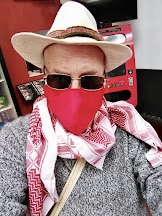
Post Script Below: Not Part of Original Letter
Finally, after almost six months of covid isolation, I was heading close to an unhealthy edge or ledge. I had to find a way out of Peru even though the airports were closed and the borders sealed. In August 2020, I escaped on a “repatriation flight” organized by the Mexican Embassy. This charter was a humanitarian flight to take Mexican nationals back home to Mexico City. Fortunately, I speak enough Spanish to pass as a Mexican — broma (joke): The flight had extra seats, so the Mexican Embassy welcomed others — BUT ONLY others from Canada or U.S.A. Viva Norte America! Once in Mexico, I had a lot of destination choices from Mexico City. After Peru, I moved on to a great Egyptian adventure! See this websites’ Table of Contents for stories of life and history in Egypt. My travel friend talked me into posing for this tourist trap picture – not my fault:
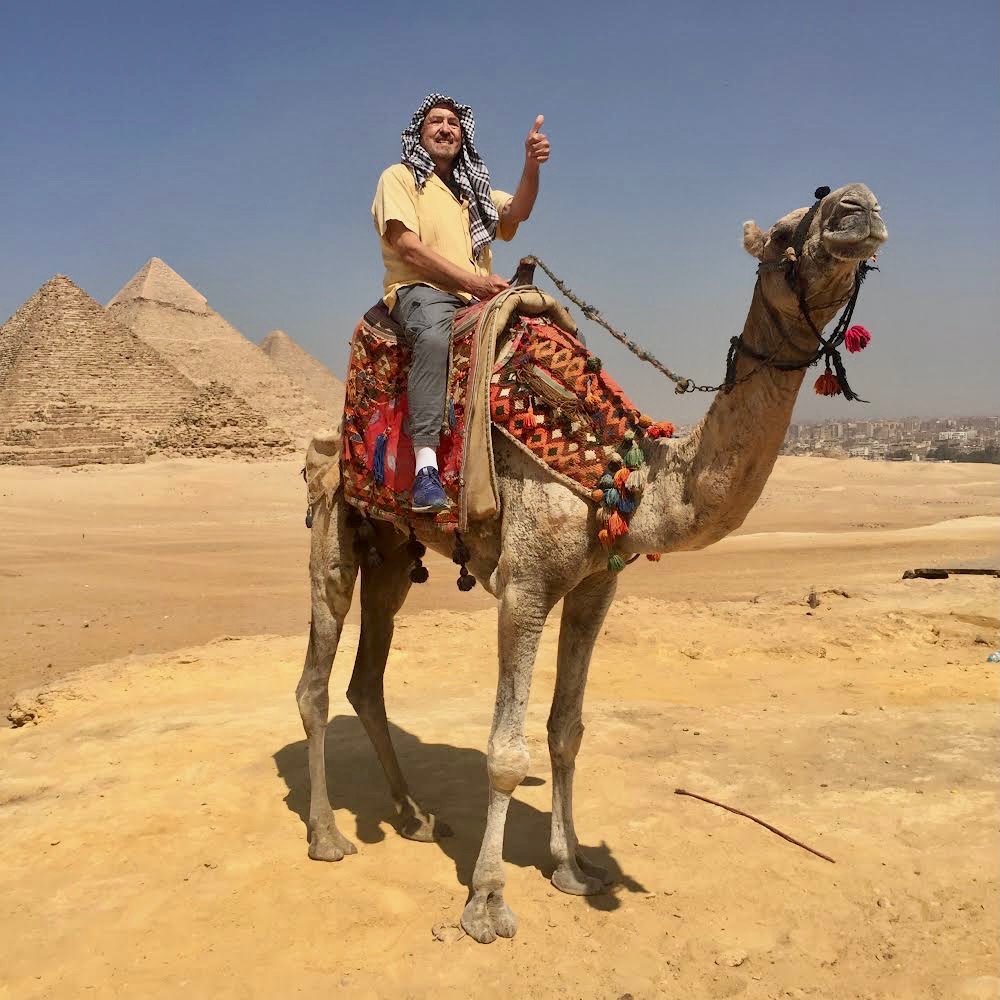
Bonus Pictures — Not Part of Original Letter
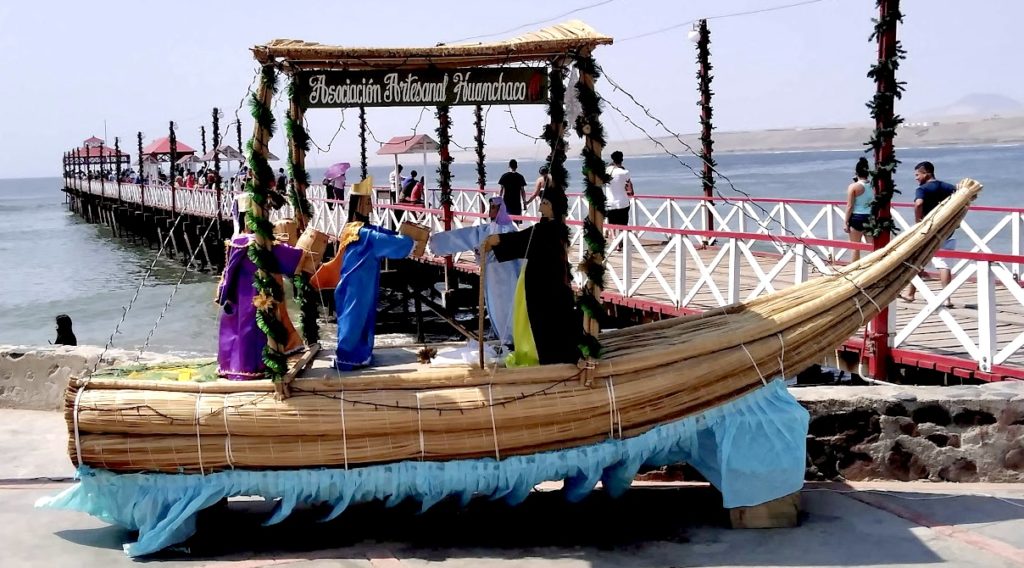
The traditional Christmas Manger Tortora Canoe Scene
I made friends and had some good times in Huanchaco. Here, let me show you:
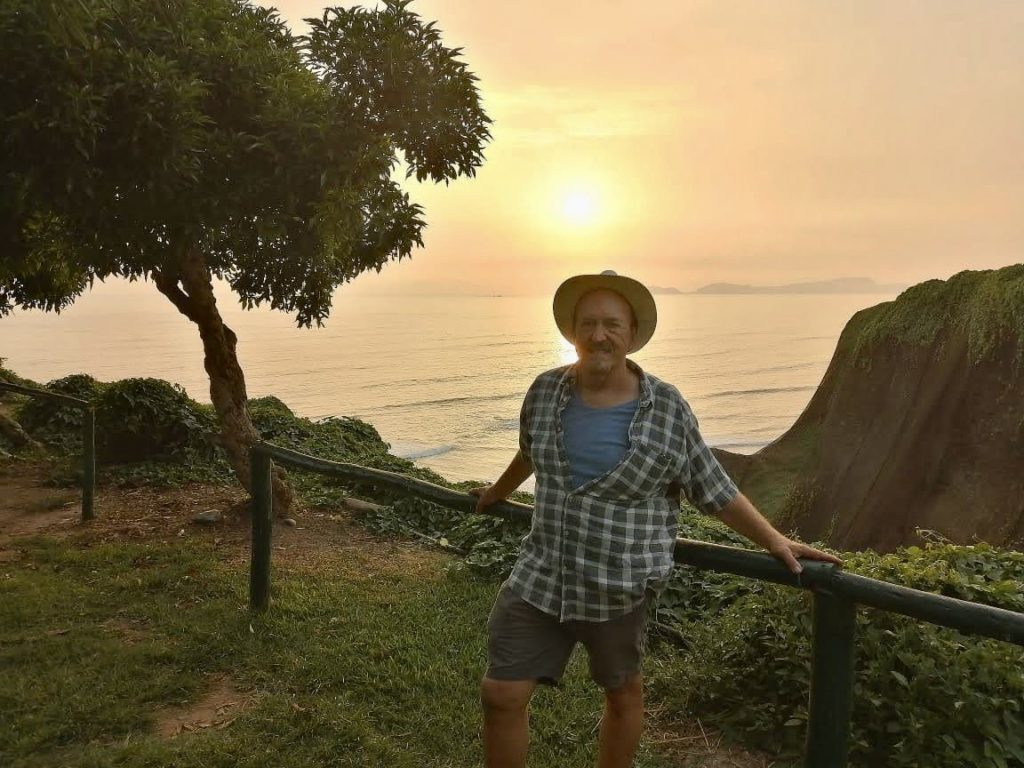
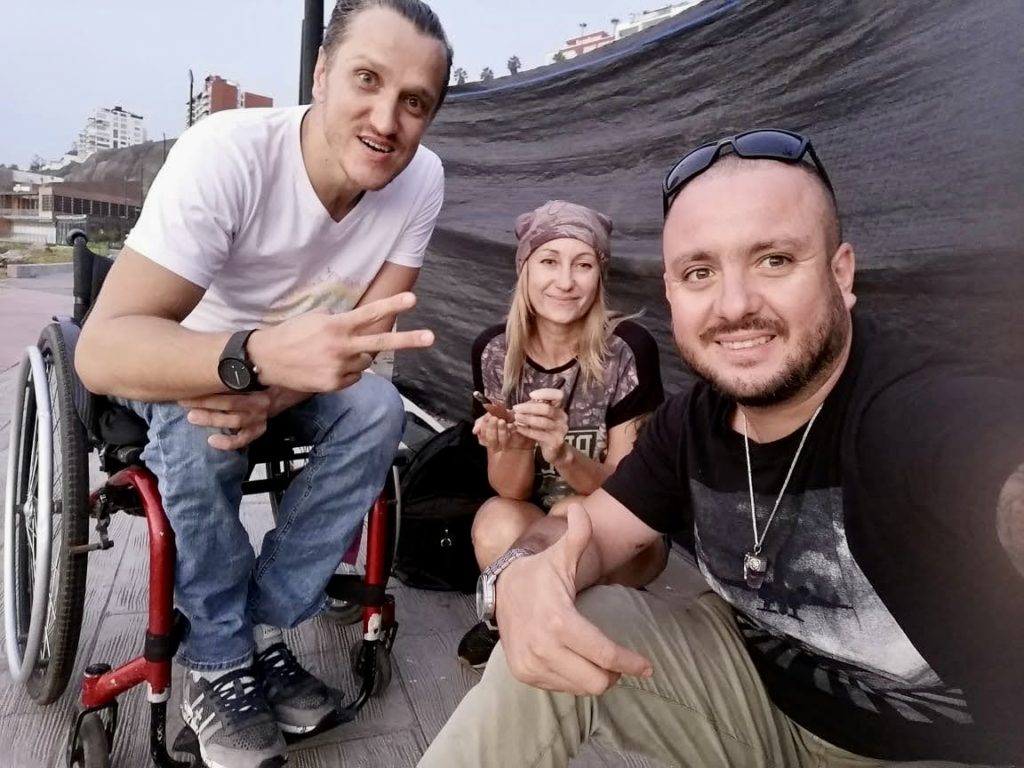
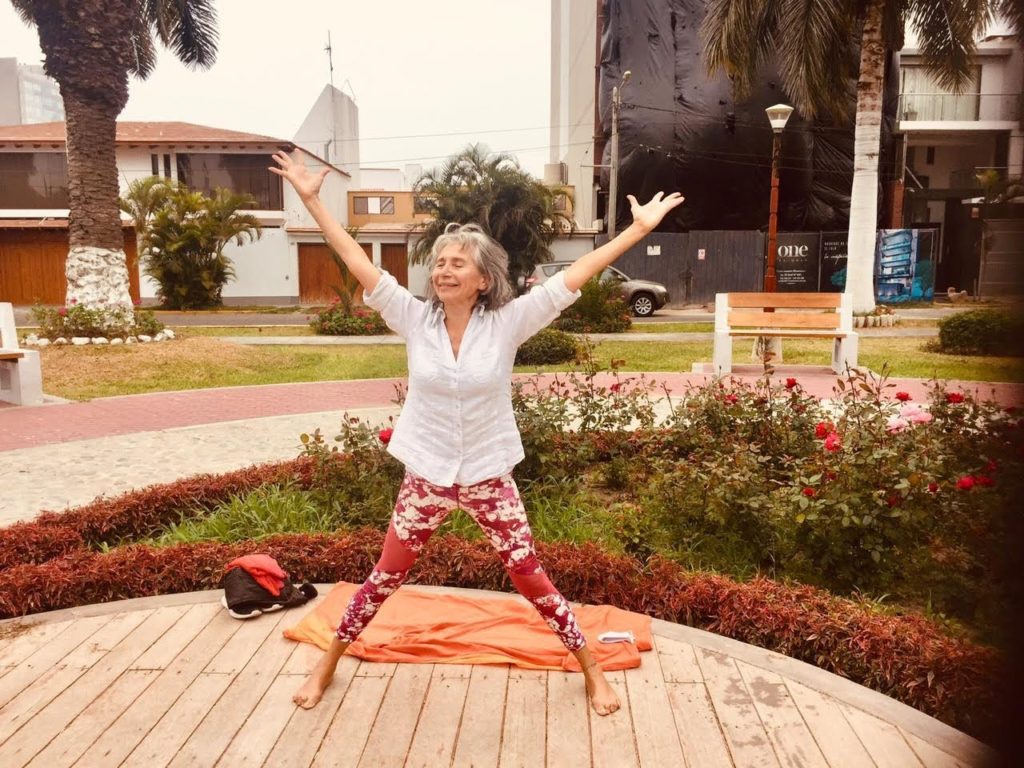
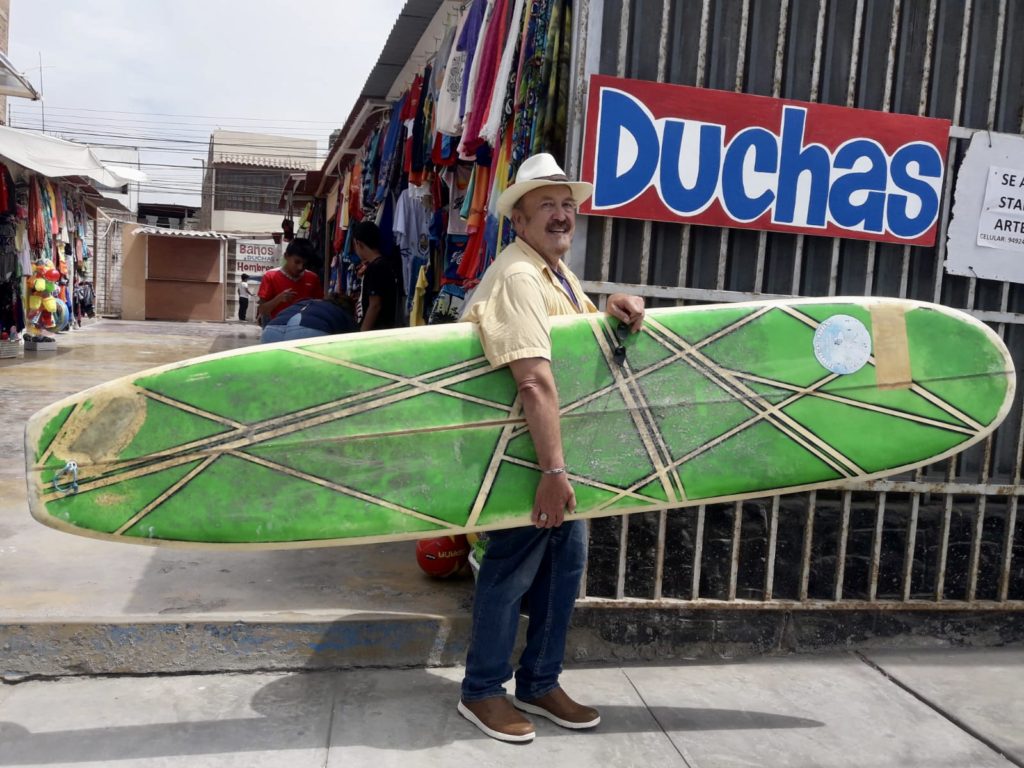
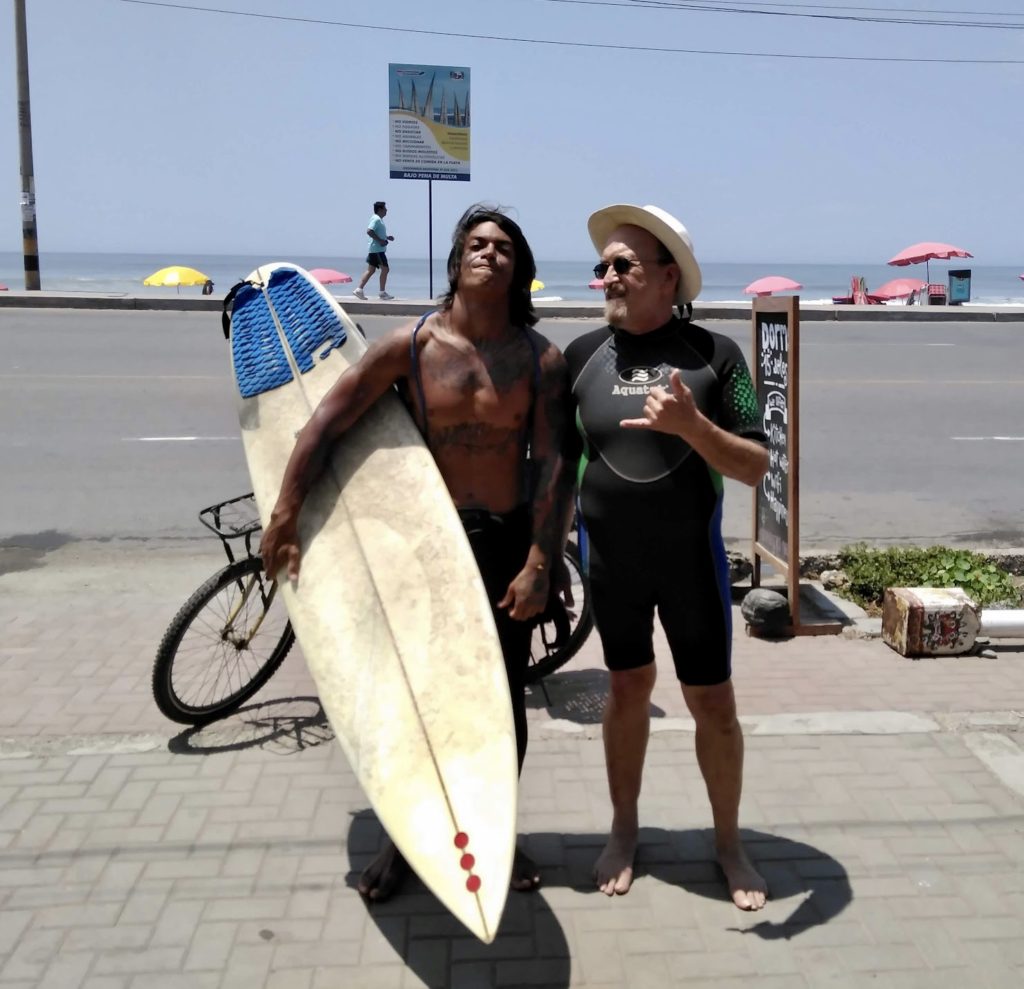
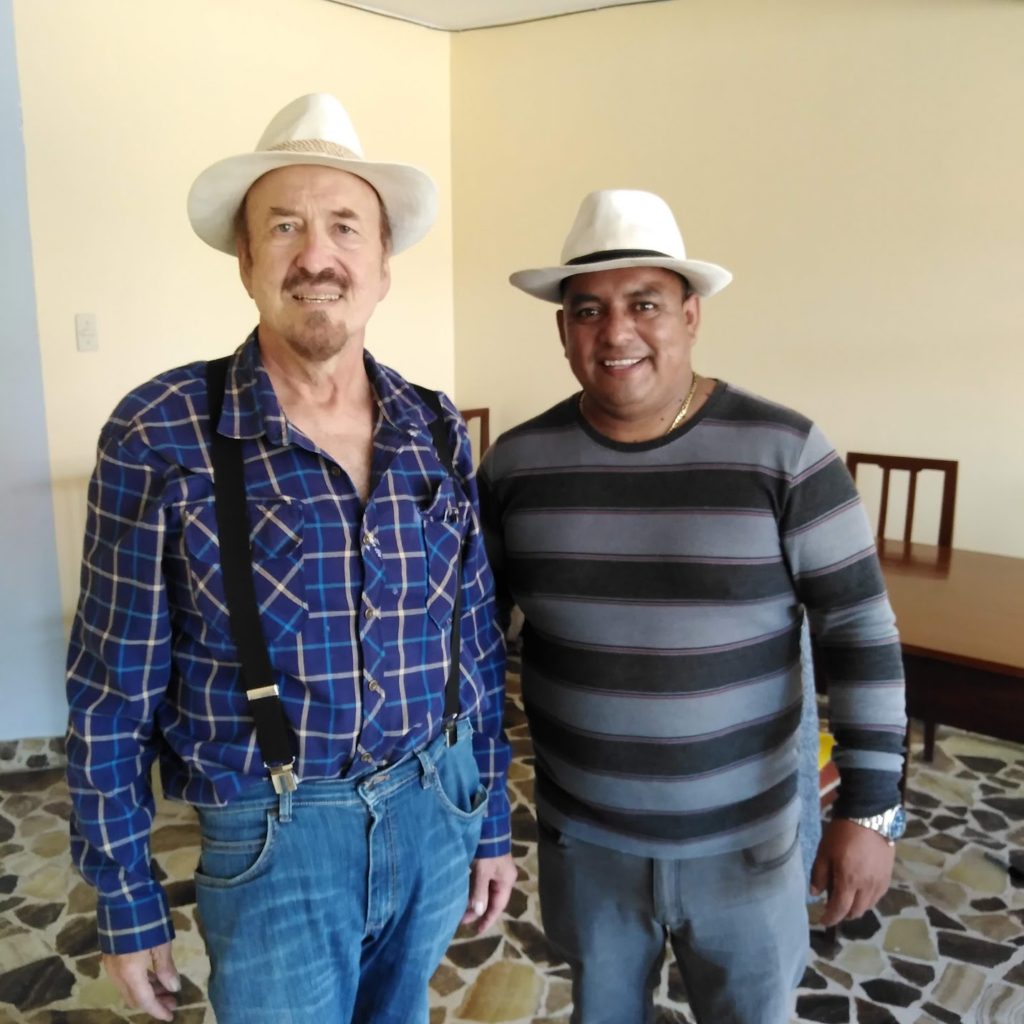
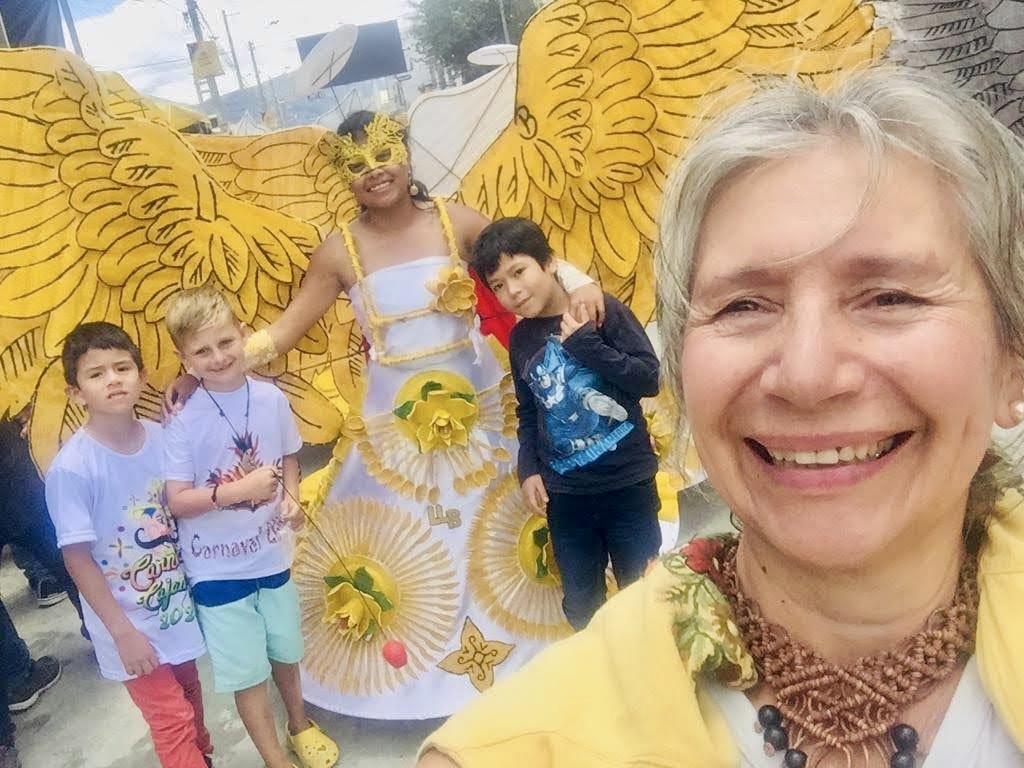
Please subscribe to Temples ‘n’ Tribes. You will receive notices of current postings, about three new articles a month.
